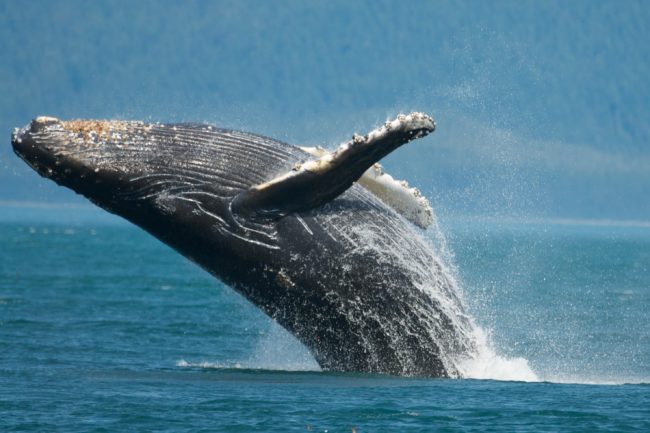
Taking a break from politics, I decided to share some of my adventures with whales and information I learned in the process during our circumnavigation. These next few posts about whales are excerpted from Voice of a Voyage: Rediscovering the World During a Ten-year Circumnavigation.
Anchored off Kapa Island in the Vava’u group of the Kingdom of Tonga, I heard strange wailing sounds while below preparing dinner. I thought it was the lone whale we saw as we sailed down from Neiafu.
Wayne laughed at me, “No way.” But then he heard it and reconsidered. “Maybe you’re right,” he conceded.
This haunting underwater sound vibrated through our hull. It was a male Humpback whale singing his come-hither mating song. It was a gift from the deep, a sound like no other; it penetrated my heart, my breath. I wanted to know this sound, to feel it vibrate on my skin, to sense it in my bones. I know I can never really understand what I call his language—linguistically it isn’t even considered a language—but in my mind this system of communication speaks to both whale and human listeners. I was hooked; I wanted to learn more.
I named the singer of this song Big Wing. His name is derived from his scientific taxonomy: Megaptera novaeangliae. Megaptera, derived from Greek, mega meaning large, and ptera meaning wing, wing-like, or feather, presumably due to their large flippers, which can be one-third of their body length and do appear wing-like in the water. Novaeanglinae means New England, where they were numerous at one time, although hunted to near extinction there in the 1800s—to us the Humpback whale. This common name comes from the way they dive by curving their backs. Such an unfortunate name for such a splendid creature.
Big Wing did not eat while here in Tonga for two reasons: not only would his time be taken up with finding an appropriate mate and instinctively ensuring that his genes were represented in the next generation, but also because his food source wasn’t here. He’s a member of the Balaenopteridae family, named for their series of baleens, which are used in their unique way of feeding. They also have a series of pleats that stretch from their lower jaw part way down the underside of their body. It is through expanding these pleats that they are able to gulp huge amounts of water, literally tons.
In the Antarctic summer, Big Wing locates dense zooplankton patches or schools of anchovies, herring, or sardines; expands his pleats; opens his immense cavity; and takes a whale-sized gulp. Keeping the fish and krill inside with the baleen filters, he spits out the water, if one can call expelling that much water spitting. Sometimes either by himself or with a few comrades, he will approach a potential meal from below and slowly encircle it, constantly blowing bubbles through his blow hole, which forces the prey to concentrate inside a bubble net. He then lunges in for that whale-size mouthful.
